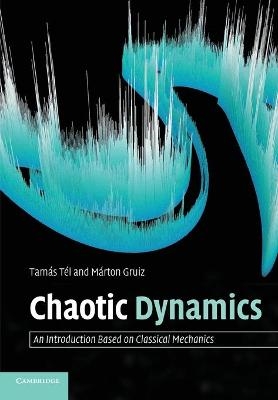
Chaotic Dynamics
An Introduction Based on Classical Mechanics
Seiten
2006
Cambridge University Press (Verlag)
978-0-521-54783-3 (ISBN)
Cambridge University Press (Verlag)
978-0-521-54783-3 (ISBN)
- Titel erscheint in neuer Auflage
- Artikel merken
Zu diesem Artikel existiert eine Nachauflage
This is a clear introduction to chaotic phenomena for undergraduate students in science, engineering, and mathematics. Richly illustrated throughout, it uses examples from classical mechanics. Important relations are also given in simple mathematical forms. It includes a range of applications, from everyday phenomena through engineering and environmental problems to astronomy.
In the past few decades we have come to understand that even motions in simple systems can have complex and surprising properties. Chaotic Dynamics provides a clear introduction to these chaotic phenomena, based on geometrical interpretations and simple arguments, without the need for prior in-depth scientific and mathematical knowledge. Richly illustrated throughout, examples are taken from classical mechanics whose elementary laws are familiar to the reader. In order to emphasize the general features of chaos, the most important relations are also given in simple mathematical forms, independent of any mechanical interpretation. A broad range of potential applications are presented, ranging from everyday phenomena through engineering and environmental problems to astronomical aspects. Chaos occurs in a variety of scientific disciplines, and proves to be the rule, not the exception. This book is primarily intended for undergraduate students in science, engineering, and mathematics.
In the past few decades we have come to understand that even motions in simple systems can have complex and surprising properties. Chaotic Dynamics provides a clear introduction to these chaotic phenomena, based on geometrical interpretations and simple arguments, without the need for prior in-depth scientific and mathematical knowledge. Richly illustrated throughout, examples are taken from classical mechanics whose elementary laws are familiar to the reader. In order to emphasize the general features of chaos, the most important relations are also given in simple mathematical forms, independent of any mechanical interpretation. A broad range of potential applications are presented, ranging from everyday phenomena through engineering and environmental problems to astronomical aspects. Chaos occurs in a variety of scientific disciplines, and proves to be the rule, not the exception. This book is primarily intended for undergraduate students in science, engineering, and mathematics.
Introduction; Part I. The Phenomenon: Complex Motion, Unusual Geometry: 1. Chaotic motions; 2. Fractal objects; Part II. Preparatory Concepts: 3. Regular motions; 4. Driven motions; Part III. Investigation of Chaotic Motion: 5. Chaos in dissipative systems; 6. Transient chaos in dissipative systems; 7. Chaos in conservative systems; 8. Chaotic scattering; 9. Applications of chaos; 10. Epilogue, outlook; Part IV. Miscellaneous: 11. Appendices; 12. Solutions to problems; 13. Bibliography.
| Erscheint lt. Verlag | 24.8.2006 |
|---|---|
| Zusatzinfo | Worked examples or Exercises; 11 Tables, unspecified; 28 Plates, color; 24 Halftones, unspecified; 280 Line drawings, unspecified |
| Verlagsort | Cambridge |
| Sprache | englisch |
| Maße | 170 x 244 mm |
| Gewicht | 680 g |
| Themenwelt | Naturwissenschaften ► Physik / Astronomie ► Strömungsmechanik |
| Technik | |
| ISBN-10 | 0-521-54783-0 / 0521547830 |
| ISBN-13 | 978-0-521-54783-3 / 9780521547833 |
| Zustand | Neuware |
| Informationen gemäß Produktsicherheitsverordnung (GPSR) | |
| Haben Sie eine Frage zum Produkt? |
Mehr entdecken
aus dem Bereich
aus dem Bereich
Wirbel, Zirkulation, Auftrieb
Buch | Softcover (2024)
De Gruyter Oldenbourg (Verlag)
CHF 62,90



